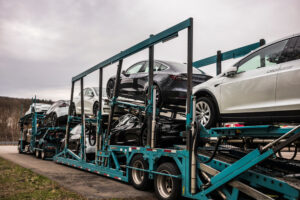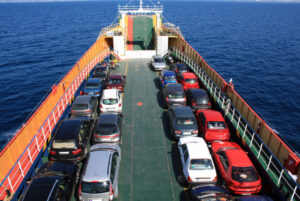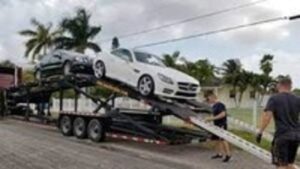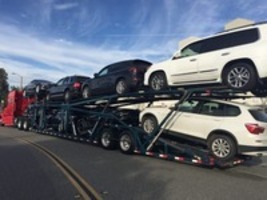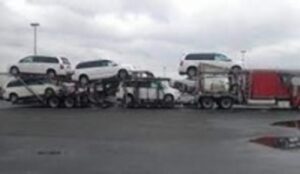Category Archives: Auto Transport
How to Transport a Pedal Boat?
Embarking on a journey with your pedal boat entails more than just the thrill of the open waters. Transporting your pedal boat demands meticulous planning and careful execution to ensure both your boat’s safety and that of fellow road users Auto Transport.
This guide dives deep into the art of transporting a pedal boat, shedding light on preparation, trailer selection, loading techniques, towing considerations, and real-life examples. Let’s set sail on the sea of knowledge!
Preparation and Securing
When transporting a pedal boat, having the right preparation and securing measures is key. Before you begin your transport, there are a few steps to consider to ensure a safe journey.
First, inspect your boat for any damage. Check for loose parts or bolts, and ensure the hull and other components are securely fastened. You may also want to ensure that the boat is completely dry so that it’s not damaged by moisture during transport.
Next, drain any water from the boat and remove any personal belongings. It’s important to secure any movable items, such as oars and life jackets. Additionally, you might want to apply a protective cover to the boat if it is exposed to large amounts of rain or dust during transport. Finally, ensure the boat is protected by a fitted boat cradle or other securing mechanism before beginning your journey.
Choosing the Right Trailer
When selecting a trailer to transport your pedal boat, there are a few things to consider. First, the trailer must have the proper ball mount and hardware to securely attach your boat and ensure it won’t come loose during transport. Second, it must support the boat’s weight and any additional gear you may carry. Third, the trailer must be sized to accommodate the length and width of your boat.
Here are a few tips to help you choose the right trailer for your pedal boat:
- Consider your boat’s weight and size when choosing a trailer. Make sure the trailer you choose is rated to hold the weight of your boat, plus any gear.
- Measure the length and width of your boat, and make sure the trailer you choose is big enough to accommodate its size.
- Ensure the trailer has the proper ball mount and hardware to secure your boat Auto Transport.
- If you plan to travel long distances or on rough roads, look for a trailer with heavy-duty axles, springs, and a braking system.
Loading and Unloading
Transporting a pedal boat can be difficult, especially if it is your first time. It is important to prepare for loading and unloading properly to ensure the process is done correctly and safely. Here are some tips to make the process easier and to help ensure the boat makes it safely to its destination:
- Have an extra person available to help you load and unload the boat. This is especially useful when dealing with heavier boats.
- Inspect the area prior to loading the boat. Make sure that the trailer is properly secured and that there are no obstacles, such as rocks or branches, that could damage the boat or trailer.
- Before loading the boat, make sure to tie it down to the trailer securely. Use straps or ropes to secure the boat to the trailer, and use a tarp if necessary.
- When unloading the boat, have someone help you with the process. It is also essential to ensure that the ground is level and that the area is free of any obstacles or debris.
- When unloading the boat, release the straps and ropes used to secure it before loading. This will help to ensure that the boat remains secure and that it can quickly be unloaded in one piece.
Towing Considerations
When towing, pedal boats can be a bit tricky. It is important to keep safety in mind and to take the necessary precautions before towing the boat. Here are some things to keep in mind:
- Be sure to choose a trailer that is rated to support your boat’s maximum weight. Check the boat’s weight and select a trailer to handle the load. Pay attention to the trailer’s tongue weight as well Auto Transport.
- Make sure the trailer is securely attached, with the boat centered and balanced properly on the trailer. Make sure it is securely tied down and all necessary straps are in place.
- Check the towing vehicle’s capacity. Make sure it can handle the load and is in good working order.
- Always check the local towing laws and regulations. Depending on your trailer type, you may need special licensing and permits.
- When towing, be aware of your speed and the road conditions. Make sure to practice safe towing techniques and avoid sharp turns and sudden stops.
Local vs. Long-Distance Transport
When transporting a pedal boat, there are two primary considerations: local and long-distance transport.
Local transport usually means a short drive between two points, often within the same city or town. Long-distance transport is when the pedal boat must be transported longer distances, such as between states or even internationally.
For local transport, you can easily use a vehicle such as a pickup truck, SUV, or van to move the boat. Secure the boat properly with straps or rope to ensure it doesn’t move during transport. If the distance is longer than a few miles, you should consider using a trailer.
If the distance is greater and you have to move your boat between states or internationally, you should consider hiring a transport or shipping service. They will be better equipped to take the necessary precautions to ensure your boat arrives safely at its destination. Some common transportation services for pedal boats include flatbed trucks, cargo ships, and air freight.
Auto Transport – Parting Words
Transporting a pedal boat can seem like a challenge, but with the right preparation and equipment it can be a straightforward process. From choosing the right trailer to properly loading and unloading, and finally making sure to consider towing requirements, transporting your pedal boat can be a fun and enjoyable experience.
Whether it’s a local transport or a long-distance haul, you can be confident that your boat will arrive safely and securely. With a few simple steps, you can be sure that your boat will be transported safely and securely.


